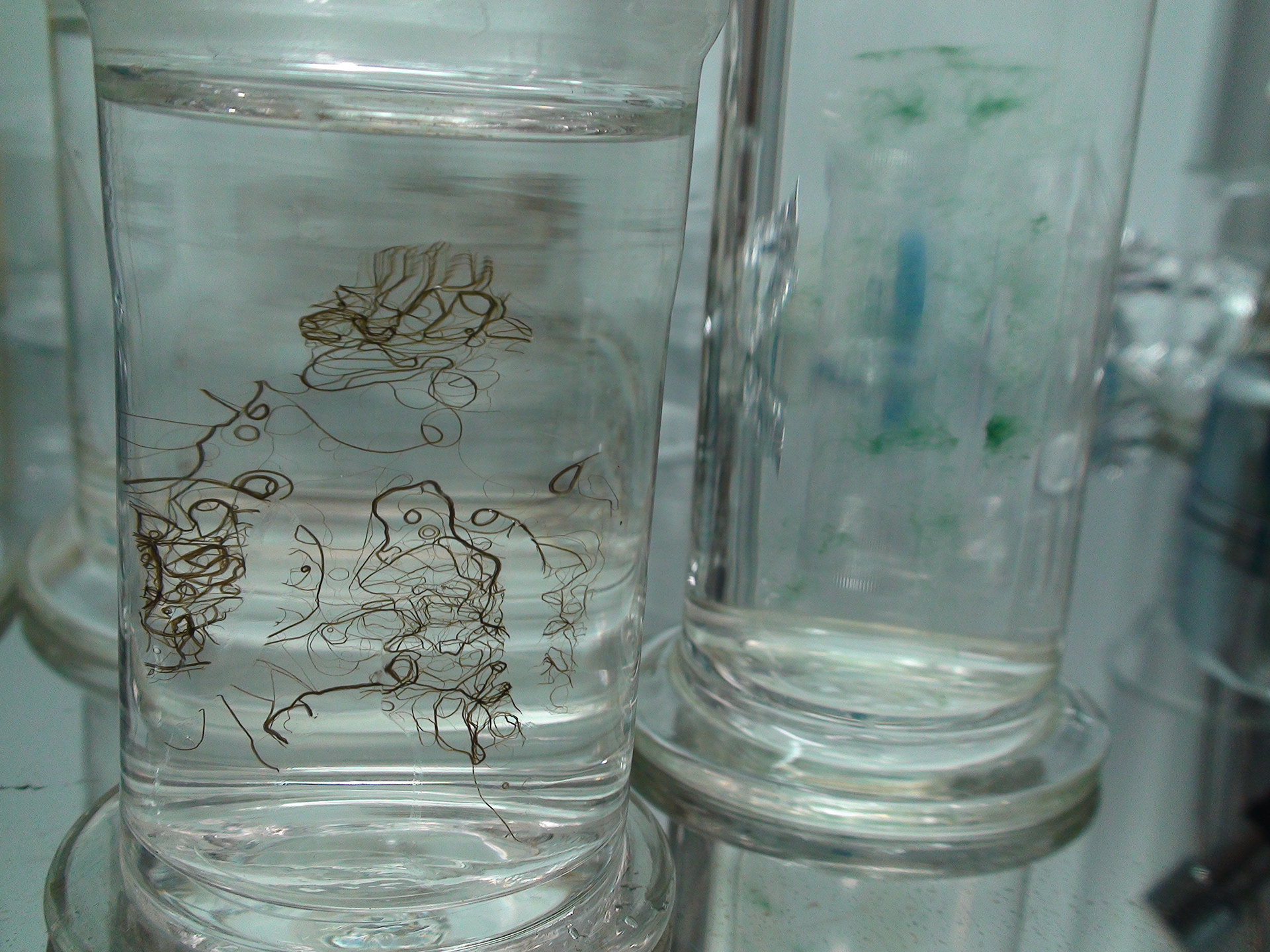Photoautotropica
2011-2012
Materials: cyanobacteria (Geitlerinema sp., Nostoc sp.Leptolyngbia sp. collected by the artists in Tokyo), plexyglass, liquid culture media, solid culture media, gelrite, glass specimen bottles, LED, PC, video
Size: 600 mm x 600 mm x 3 m
"Bacteria called cyanobacteria (also known as blue-green algae) started oxygenic photosynthesis by getting energy from water with solar power ~ 3.5 billion years ago, and the earth has become a planet which is rich in molecular oxygen. They are one of the most widely distributed organisms on the earth, such as in the polar regions, oceans, lakes, ponds, rivers, soils and deserts. Based on the cellular symbiosis, they are thought to be ancestral to the chloroplasts in higher plants. It is important to know that any carbon source in the body of terrestrial organisms is derived from photosynthetic reactions in cyanobacteria and plants.
When I was a small kid, I have earnestly worried why I could not photosynthesize by myself: "If I can do, I could spend a whole day by simply basking in the sun!" In glass specimen bottles, human-shaped cyanobacteria are growing slowly. Does the pastoral/childish dream of “green humans” go to a Utopia, or go to dystopia? Filamentous (multicellular) cyanobacterial species used in this artwork have been isolated and cultured by myself from the neighboring ponds in Japan. They will be living at the interface which is hard to be called artificial or natural, drawing complicated patterns, and die. Instead of solar light, they will photosynthesize with illumination from projected movies of the semi-artificial/natural cyanobacterial colony pattern formations under the microscope. Such patterns are not familiar even to biologists, but absolutely they are our close neighbors in our daily life.
Size: 600 mm x 600 mm x 3 m
"Bacteria called cyanobacteria (also known as blue-green algae) started oxygenic photosynthesis by getting energy from water with solar power ~ 3.5 billion years ago, and the earth has become a planet which is rich in molecular oxygen. They are one of the most widely distributed organisms on the earth, such as in the polar regions, oceans, lakes, ponds, rivers, soils and deserts. Based on the cellular symbiosis, they are thought to be ancestral to the chloroplasts in higher plants. It is important to know that any carbon source in the body of terrestrial organisms is derived from photosynthetic reactions in cyanobacteria and plants.
When I was a small kid, I have earnestly worried why I could not photosynthesize by myself: "If I can do, I could spend a whole day by simply basking in the sun!" In glass specimen bottles, human-shaped cyanobacteria are growing slowly. Does the pastoral/childish dream of “green humans” go to a Utopia, or go to dystopia? Filamentous (multicellular) cyanobacterial species used in this artwork have been isolated and cultured by myself from the neighboring ponds in Japan. They will be living at the interface which is hard to be called artificial or natural, drawing complicated patterns, and die. Instead of solar light, they will photosynthesize with illumination from projected movies of the semi-artificial/natural cyanobacterial colony pattern formations under the microscope. Such patterns are not familiar even to biologists, but absolutely they are our close neighbors in our daily life.
2013 "3rd nature: SCANZ" Pukekura, New Zealand.
2012 "The Fourth State of Water: From Micro to Macro" Torun, Poland (Contemporary Art Centre).
2011-2012 "Utsurobune: Science and Art Marriage", The Taro Okamoto Museum, Tokyo.





